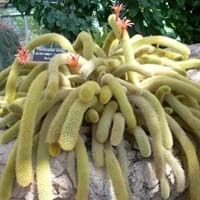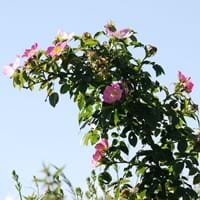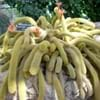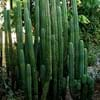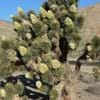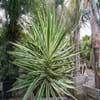Life Span
Perennial
Perennial
Type
Cactus
Flowering Plants
Origin
Not Available
Europe, India, Northwestern Africa, Western Asia
Types
Not Available
Not Available
Habitat
Not Available
disturbed sites, Roadsides, stream banks, Woods
USDA Hardiness Zone
12-15
Not Available
AHS Heat Zone
12-10
Not Available
Sunset Zone
12, 13, 21, 22, 23, 24
Not Available
Habit
Upright/Erect
Upright/Erect
Flower Color
Red, Orange, Salmon
Deep Pink, Pale Pink, White
Flower Color Modifier
Not Available
Bicolor
Fruit Color
Not Available
Non Fruiting Plant
Leaf Color in Spring
Not Available
Green, Gray Green, Dark Green
Leaf Color in Summer
Not Available
Green
Leaf Color in Fall
Not Available
Green, Gray Green, Dark Green
Leaf Color in Winter
Not Available
Green, Dark Green
Leaf Shape
Succulent
Pinnate
Plant Season
Spring, Summer, Fall, Winter
Spring, Summer
Sunlight
Full Sun
Partial shade, Partial Sun
Growth Rate
Not Available
Medium
Type of Soil
Loam, Sand
Clay, Loam
The pH of Soil
Acidic, Neutral, Alkaline
Alkaline
Soil Drainage
Well drained
Well drained
Bloom Time
Spring, Summer
Spring, Summer
Tolerances
Drought
Wet Site
Where to Plant?
Container, Ground, Pot
Container, Ground, Pot
How to Plant?
Seedlings, Stem Cutting
Seedlings, Stem Planting
Plant Maintenance
Medium
Medium
Watering Requirements
Reduce watering in winter
Keep the ground moist but not water-logged
In Summer
Lots of watering
Lots of watering
In Spring
Moderate
Moderate
In Winter
Average Water
Average Water
Soil pH
Acidic, Neutral, Alkaline
Alkaline
Soil Type
Loam, Sand
Clay, Loam
Soil Drainage Capacity
Well drained
Well drained
Sun Exposure
Full Sun
Partial shade, Partial Sun
Pruning
No pruning needed, Remove damaged leaves, Remove dead branches, Remove dead leaves
cut main flower spike, Remove dead branches, Remove dead or diseased plant parts
Fertilizers
Fertilize the soil before planting, slow-release fertilizers
Apply 10-10-10 amount, as it is a flowering plant, use high phosphorous content fertilizer
Pests and Diseases
Bacterial Stem Rot, fungus, Mealybugs, Spider mites
Birds, Red blotch
Plant Tolerance
Drought
Drought, Wet Site
Flower Petal Number
Single
Single
Foliage Texture
Bold
Medium
Foliage Sheen
Not Available
Matte
Attracts
Hummingbirds
Birds, Small mammals
Allergy
Not Available
Constipation, Diarrhea, Headache, Heartburn, Nausea, Pain and fatigue, Stomach pain, Vomiting
Aesthetic Uses
Landscape Designing, Showy Purposes, Wild gardens
Bonsai, Bouquets, Cottage Garden, Showy Purposes
Beauty Benefits
Not Available
Good for skin, Skin Problems
Environmental Uses
Air purification
Air purification, Food for birds
Medicinal Uses
No Medicinal Use
Astringent, Diuretic, Laxative, Vitamin C
Part of Plant Used
Whole plant
Flowers, Rose Hip
Other Uses
Florist trade and landscaping, Used as Ornamental plant
Making Perfumes, Used as Ornamental plant, Used for its medicinal properties
Used As Indoor Plant
No
Yes
Used As Outdoor Plant
Yes
Yes
Garden Design
Container, Houseplant, Rock Garden, Wall
Feature Plant, Mixed Border
Botanical Name
Cleistocactus Winteri
Rosa canina
Common Name
Golden rat tail, rat tail cactus
Dog Rose
In Hindi
cleistocactus winteri
एक प्रकार का जंगली गुलाब
In German
Cleistocactus winteri
Heckenrose
In French
Cleistocactus winteri
Dog Rose
In Spanish
Cleistocactus winteri
Perro se levantó
In Greek
cleistocactus winteri
Dog Rose
In Portuguese
Cleistocactus Winteri
Dog Rose
In Polish
Cleistocactus Winteri
Dzika róża
In Latin
Cleistocactus Winteri
cynorrhodon
Phylum
Magnoliophyta
Magnoliophyta
Class
Magnoliopsida
Magnoliopsida
Order
Caryophyllales
Rosales
Family
Cactaceae
Rosaceae
Clade
Angiosperms, Core eudicots, Eudicots
Angiosperms, Eudicots, Rosids
Tribe
Trichocereeae
Not Available
Subfamily
Cactoideae
Not Available
Number of Species
Not Available
Season and Care of Cleistocactus Winteri and Dog Rose
Season and care of Cleistocactus Winteri and Dog Rose is important to know. While considering everything about Cleistocactus Winteri and Dog Rose Care, growing season is an essential factor. Cleistocactus Winteri season is Spring, Summer, Fall and Winter and Dog Rose season is Spring, Summer, Fall and Winter. The type of soil for Cleistocactus Winteri is Loam, Sand and for Dog Rose is Clay, Loam while the PH of soil for Cleistocactus Winteri is Acidic, Neutral, Alkaline and for Dog Rose is Alkaline.
Cleistocactus Winteri and Dog Rose Physical Information
Cleistocactus Winteri and Dog Rose physical information is very important for comparison. Cleistocactus Winteri height is 60.00 cm and width 30.00 cm whereas Dog Rose height is 300.00 cm and width 200.00 cm. The color specification of Cleistocactus Winteri and Dog Rose are as follows:
Cleistocactus Winteri flower color: Red, Orange and Salmon
Cleistocactus Winteri leaf color: Not Available
Dog Rose flower color: Deep Pink, Pale Pink and White
- Dog Rose leaf color: Green, Gray Green and Dark Green
Care of Cleistocactus Winteri and Dog Rose
Care of Cleistocactus Winteri and Dog Rose include pruning, fertilizers, watering etc. Cleistocactus Winteri pruning is done No pruning needed, Remove damaged leaves, Remove dead branches and Remove dead leaves and Dog Rose pruning is done cut main flower spike, Remove dead branches and Remove dead or diseased plant parts. In summer Cleistocactus Winteri needs Lots of watering and in winter, it needs Average Water. Whereas, in summer Dog Rose needs Lots of watering and in winter, it needs Average Water.
